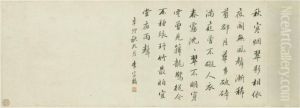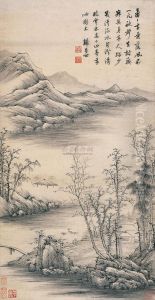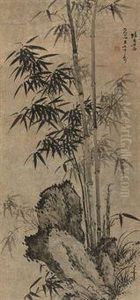Gui Changshi Paintings
Gui Changshi was a notable Chinese painter, calligrapher, and art educator, who is considered one of the early modern pioneers of Chinese art. Born in 1877 in Jiangsu Province, Gui was part of a generation of artists who were active during a period of significant political and social changes in China, coinciding with the fall of the Qing Dynasty and the rise of the Republic of China.
Gui Changshi initially trained in the traditional Chinese style of painting, with a focus on landscapes, flowers, and birds. He was deeply influenced by the scholarly painting tradition of the Ming and Qing dynasties. However, as China opened up to the influences of the Western world, Gui was among the artists who began to explore new techniques and perspectives, integrating Western methods with traditional Chinese aesthetics.
During his career, Gui Changshi held several teaching positions, including at institutions such as the Shanghai Art College, where he influenced many younger artists. He played a crucial role in the development of modern Chinese art education, emphasizing the importance of both preserving traditional Chinese art forms and embracing innovation.
Gui's own artwork often reflected this blend of traditional and modern, with meticulous brushwork characteristic of Chinese painting, alongside bolder experimentation with composition and form. He was particularly renowned for his landscapes, which conveyed a strong sense of atmosphere and the spiritual qualities of nature.
Throughout his life, Gui Changshi contributed to art theory and criticism in China, writing essays and articles that discussed the role of art in society and the importance of cultural heritage. His death in 1954 marked the loss of an influential figure in the transformation of Chinese art during a critical period in the country's history.


